Cervalces (Libralces) gallicus (Gallic stag moose)
123123Cervalces (Cervalces (Libralces) gallicus Azzaroli, 1952)
Order: Artiodactyla
Family: Cervidae
Temporal range: during the during the late Pliocene - Early Pleistocene (Eurasia)
Dimensions: length - 2,8 m, height - 140 сm, weight - 400 kg
Cervalces was smaller in size, reaching a shoulder around 140 cm in height. But most impressive was the range of horns, which could be up to 2.5 m. It provides a very long (up to 100 cm each) rod horns and different structures of the skull, and were low and broad, with thick bones and with a slightly swollen face part. The modern mooses greatly elongated premaxillae and nasal bones are very short and often inflated, as the front part of the frontal bone. In Cervalces, a common structure for the deer and the relationship of the maxillary and nasal bones is so the face that looked like a moose is unlikely. It is assumed, moreover, the presence of Cervalces upper canines. In the southern areas of northern Eurasia, where this species lived in the Late Pliocene, dominated forest-steppe and steppe landscapes of the modern type of savannah, and the big horns could be used in "demonstration" purposes, that as time involves dwelling in the open with good visibility.
Cervalces (Cervalces (Libralces) gallicus Azzaroli, 1952)
Order: Artiodactyla
Family: Cervidae
Temporal range: during the during the late Pliocene - Early Pleistocene (Eurasia)
Dimensions: length - 2,8 m, height - 140 сm, weight - 400 kg
Cervalces was smaller in size, reaching a shoulder around 140 cm in height. But most impressive was the range of horns, which could be up to 2.5 m. It provides a very long (up to 100 cm each) rod horns and different structures of the skull, and were low and broad, with thick bones and with a slightly swollen face part. The modern mooses greatly elongated premaxillae and nasal bones are very short and often inflated, as the front part of the frontal bone. In Cervalces, a common structure for the deer and the relationship of the maxillary and nasal bones is so the face that looked like a moose is unlikely. It is assumed, moreover, the presence of Cervalces upper canines. In the southern areas of northern Eurasia, where this species lived in the Late Pliocene, dominated forest-steppe and steppe landscapes of the modern type of savannah, and the big horns could be used in "demonstration" purposes, that as time involves dwelling in the open with good visibility.

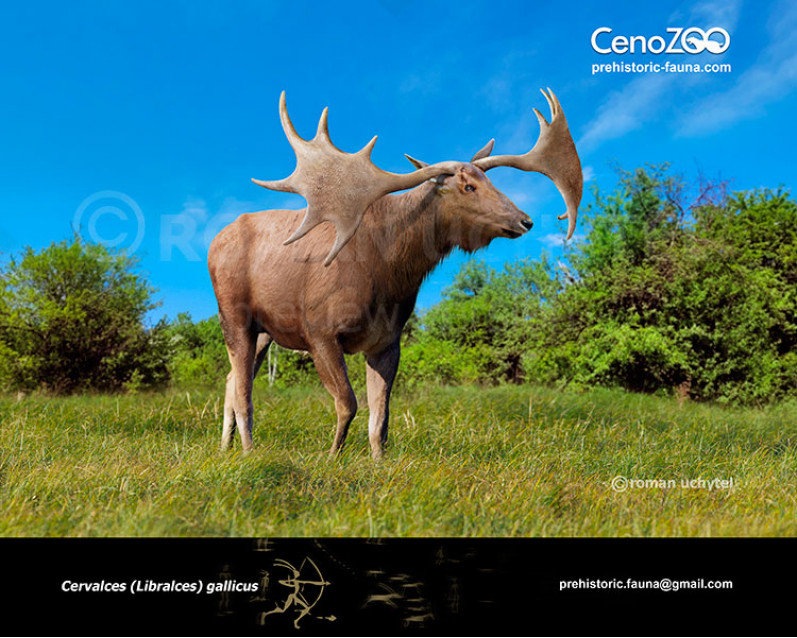
-797x638.jpg)

-70x56.jpg)
-346x277.jpg)
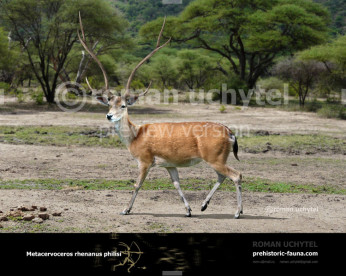
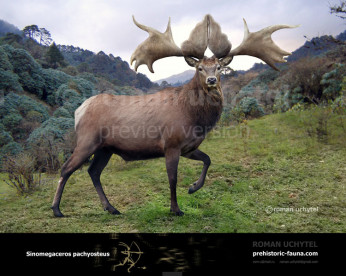
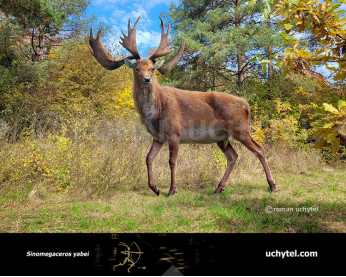
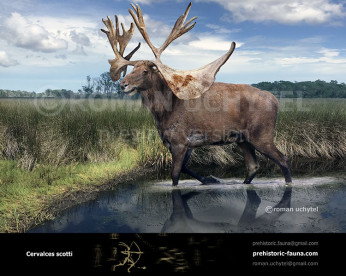
-346x277.jpg)